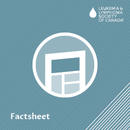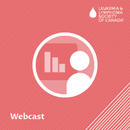Resource Library
Showing 131 to 140 of 333 results
You or your loved one has been diagnosed with a type of blood cancer. Cancer treatment can be complex, with different types of treatment options available for some blood cancers. What are they and how do they work? This fact sheet will help you Learn about the different treatment options available, Understand each type of treatment and how it can help,…
This 1-hour webcast covers the importance of early recognition and intervention, recognizing mental health issues in younger children, age appropriate conversations, how to talk to your child about emotions and mental health, supporting siblings and some of those unique challenges faced by a sibling whose loved one is going through a pediatric blood cancer…
Watch this 1-hour recorded webcast by Dr. Heather Leitch as she discusses myelodysplastic syndromes (MDS), a group of cancers of the blood and bone marrow.
Dr. Leitch is a hematologist at St. Paul’s Hospital in Vancouver, Canada and Clinical Professor in the Department of Medicine, University of British Columbia. Her clinical and research interests…
Dr. Leitch is a hematologist at St. Paul’s Hospital in Vancouver, Canada and Clinical Professor in the Department of Medicine, University of British Columbia. Her clinical and research interests…
In this 1-hour recorded webcast, hematologist-oncologist at the Princess Margaret Cancer Centre in Toronto, and DLBCL researcher, Dr. John Kuruvilla, discusses diagnosis and approach to managing and treating DLBCL, the most commonly diagnosed subtype of non-Hodgkin lymphoma.
Palliative care is appropriate for anyone with a serious illness such as blood cancer - regardless of their age, stage of disease, or prognosis. Palliative care is not limited to individuals with non-curative cancer. This type of care focusing on improving your quality of life, is sometimes called holistic care or whole–person centered care.
Your treatment for cancer can cause dental and oral (mouth) complications. Complications are medical problems that happen as a result of a procedure, treatment, or illness. They affect one third of people who go through cancer treatment. Dental and oral health refer to the well-being of your entire mouth. This includes your teeth, gums, the lining of your…
Caring for your child diagnosed with a blood cancer can feel like your whole world is collapsing – but of course, collapsing is not an option for you. Spending time, as early as possible, on getting help with any mental health concerns is time well spent to strengthen your support of your child.
Get an overview of tests for blood cancers; understand what different lab and imaging tests are used for; learn about the healthcare professionals who do these tests; and how to prepare for tests.
This type of leukemia affects larger lymphocytes, with granules (small grains) that are visible. It can develop slowly (chronic) or progress quickly (aggressive), and affects both men and women, average age of 60 years.
Loss of appetite is a common side effect of cancer and your treatment. This means you may not feel hungry, not want to eat, or have no taste for food. It can lead to weight loss that could negatively impact your health and quality of life. It’s important to eat well during your cancer treatment so you don’t experience malnutrition.

